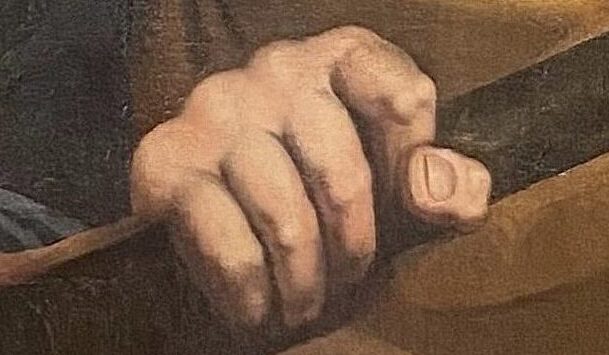Versions of Domitian
Versions of Domitian painted in the 16th and 17th century.
In our historical research we have found several sets of copies of Titian’s original series. So far we have found four other different versions of Domitian in full sets of emperors, or part of, with approximately the same size, painted in the 16th and 17th century. We have also found three different singles versions of Domitian, from the 16th and 17th century. There are several other versions, in various sizes, compositions, art medium, from bust- to half-length portrait, singles or in sets, painted in the 16th and 17th century.
Version 1
The Domitian.

After surface restoration, preliminary image.
Version 2
Aegidius Sadeler’s engraving.

Aegidius Sadeler’s engraving
Examples of version 2:

Unknown Paduan artist.
From a set of twelve emperors, Musei Civici, Padua, Italy. They also have a set of twelve Roman empresses.
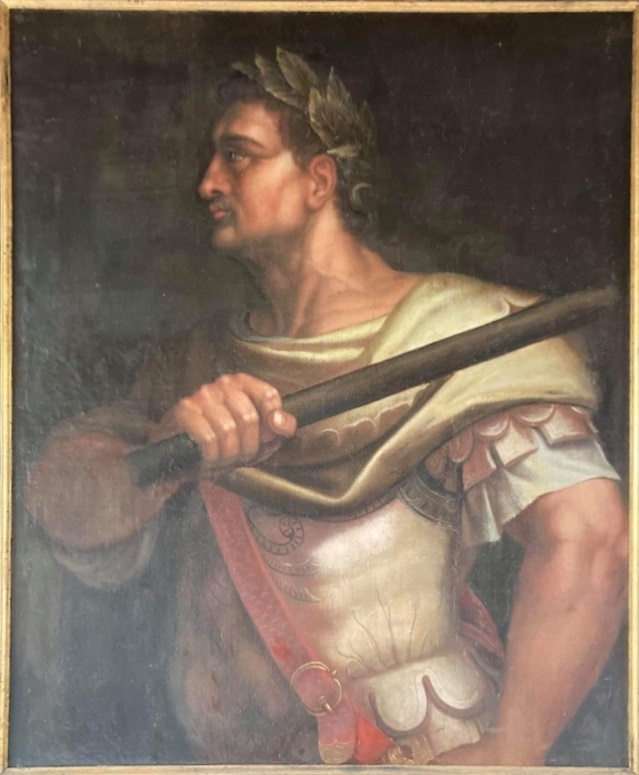
Uppsala. Unknown artist.
From a partial set of emperors, Uppsala Castle, Uppsala, Sweden. Swedish war booty, Prague, 1648. They also have a partial set of Roman empresses.

Bolsover. Unknown artist.
From a set of ten emperors, Bolsover Castle, Bolsover, UK. They also have two empresses.
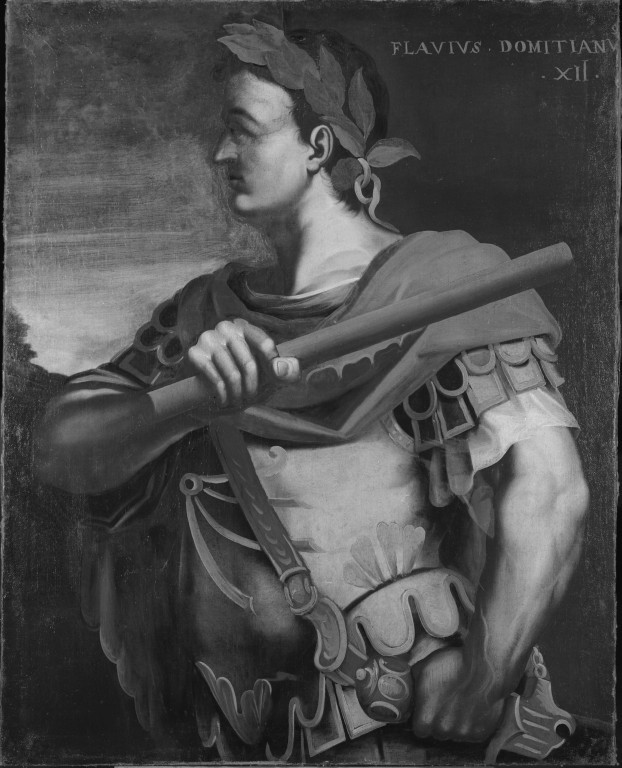
Ravenna. Unknown artist.
From a set of six emperors, Biblioteca Classense, Ravenna, Italy.
Version 3
Bernardino Campi’s own version of Domitian in his album of drawings of Titian’s emperors, Archivio Borromeo, Isola Bella, Lake Maggiore, Italy.
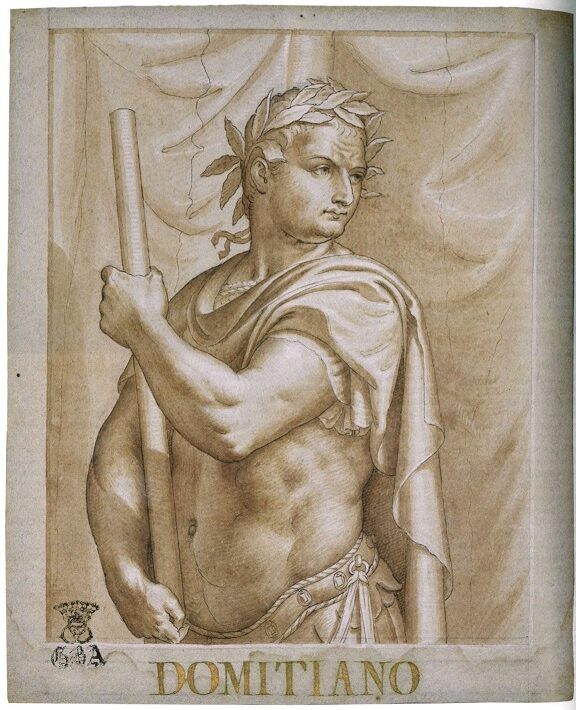
Drawing, Bernardino Campi.
Examples of version 3:
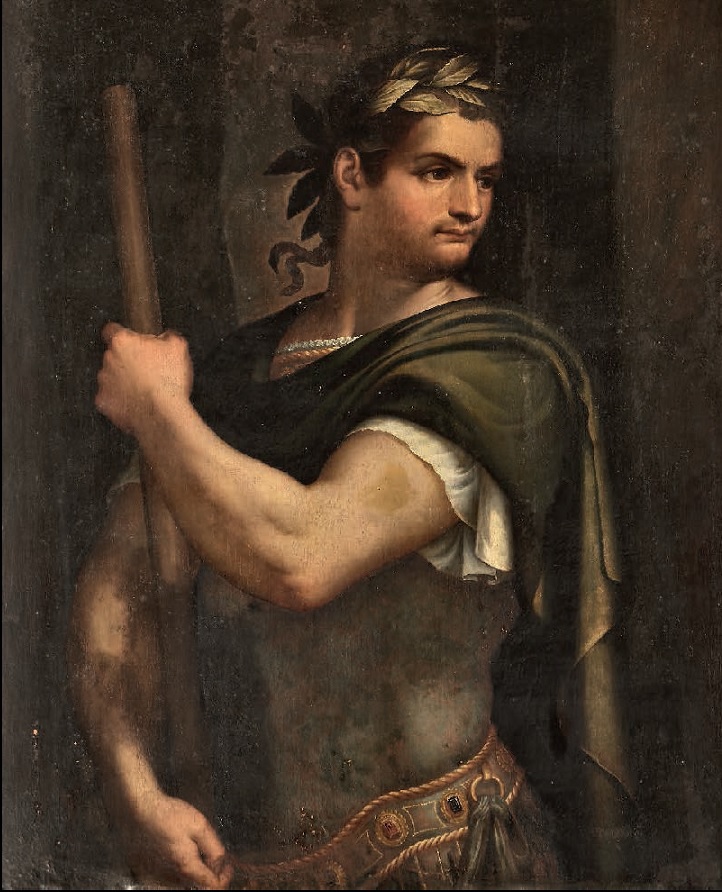
Naples. Bernardino Campi. Photo: The Capodimonte Museum, Naples, Italy.
From a set of twelve emperors, Capodimonte, Naples, Italy.
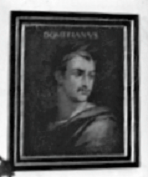
Preliminary image. Unknown artist.
From a set of twelve smaller bust-length emperors, private residence, Sweden.
Version 4 – Another Bernardino Campi version.
Example of version 4:
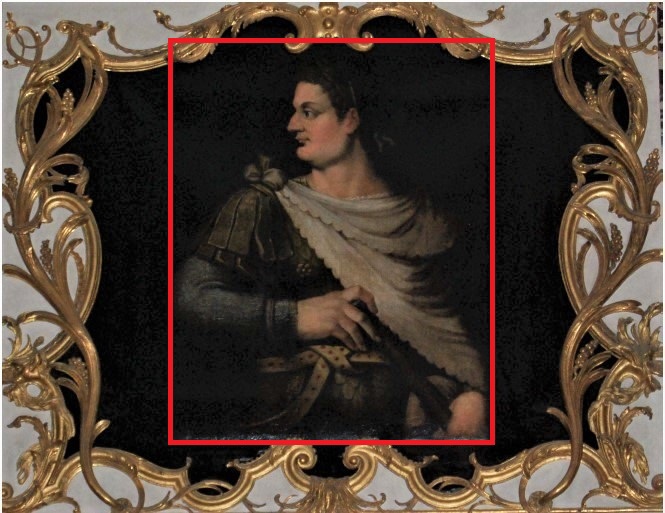
Munich. Bernardino Campi. The actual painting is marked with a red rectangle.
From a set of twelve emperors, The Residenz, Munich, Germany.
Version 5
Camerino dei Cesari in the Ducal Palace, Mantua, Italy, is the room where Titian’s original series first was on display. The paintings displayed today in the Camerino die Cesari are eleven copies. The twelfth painting, Domitian, was on display by itself in the adjacent room, Camerino di Ganimede (Camerino dei Falconi), but is now in storage. This set of twelve paintings was bought in Venice in 1924 and installed in the Ducal Palace, Mantua, in the mid-1920s.
Example of version 5:

The twelfth painting in Mantua. Mantuan artist.
From a set of twelve emperors, Ducal Palace, Mantua, Italy
Other versions
Example of another version in a series:
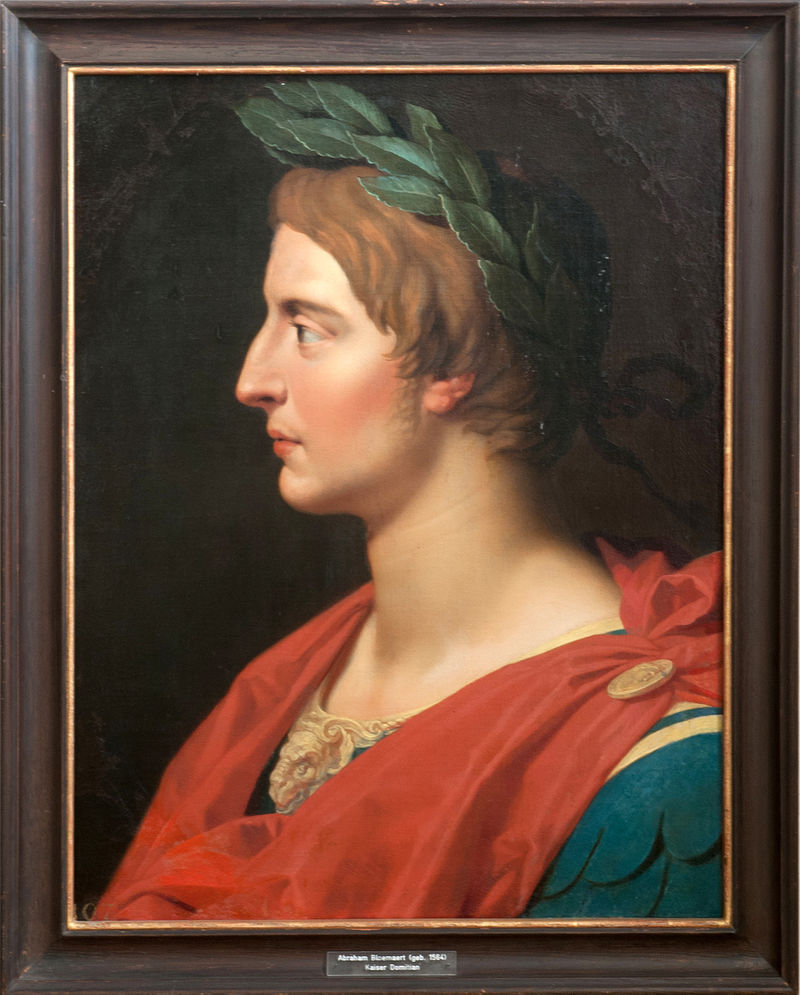
Abraham Bloemaert (1564-1651).
From a set of twelve smaller bust-length emperors, different artists, Caputh Castle, Potsdam, Germany. No direct connection to Sadeler’s engravings.
Singles
Examples:
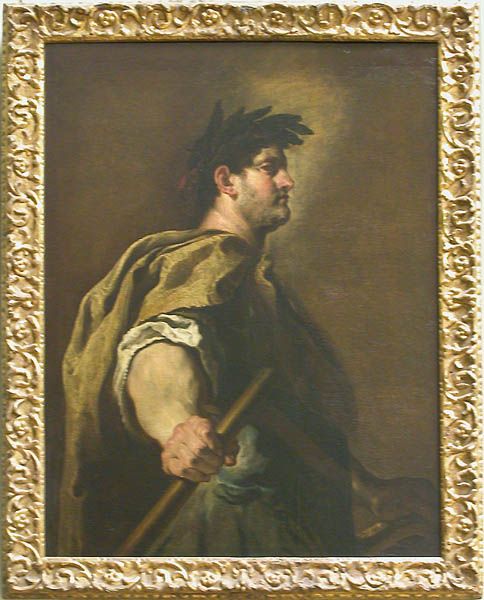
Domenico Fetti (1589-1623).
This painting, now at The Louvre, Paris, France, along with another version of the same subject (Schönborn Collection, Pommersfelden) was at the Ducal Palace in Mantua until the early 18th century.

Copy after Domenico Fetti.
Nationalmuseum, Stockholm, Sweden.

Unknown artist.
Kodner Galleries, USA, 2015.
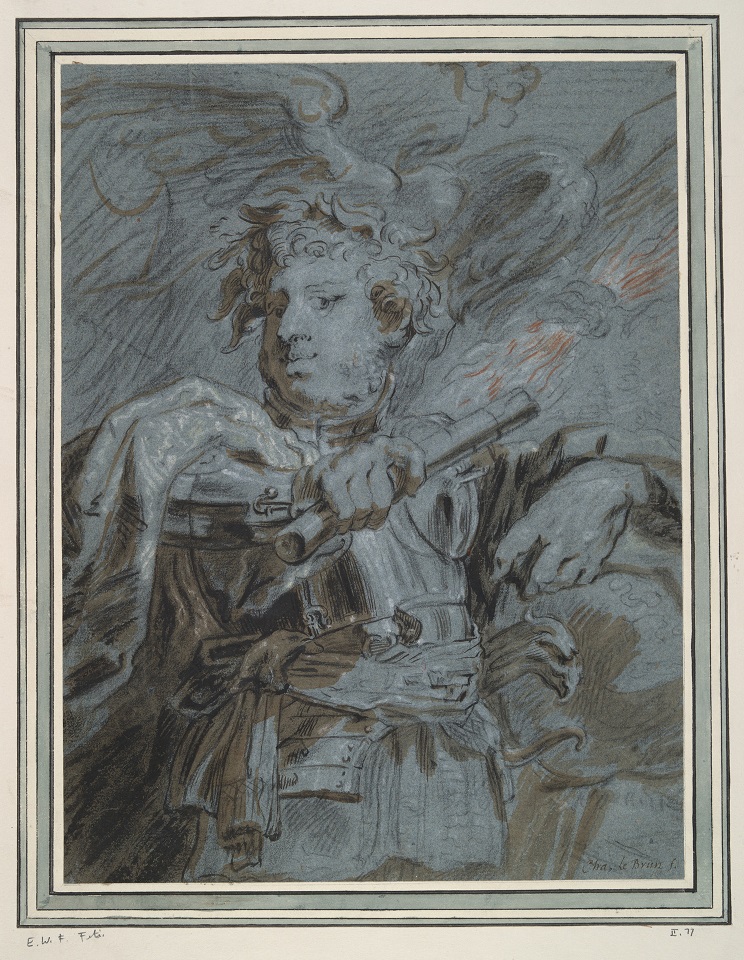
Drawing by Domenico Fetti.
Yale University Art Gallery, New Haven, USA.
